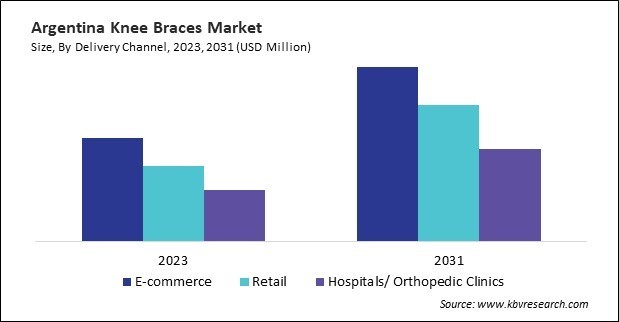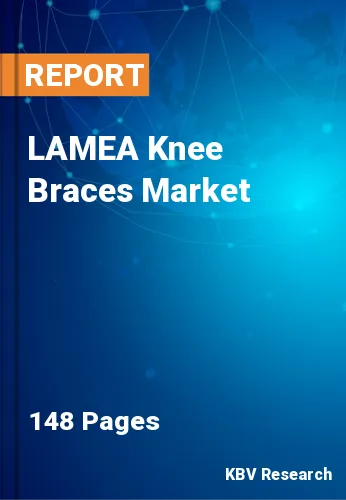The Latin America, Middle East and Africa Knee Braces Market would witness market growth of 6.7% CAGR during the forecast period (2024-2031). In the year 2027, the LAMEA market's volume is expected to surge to 1,317.8 thousand units, showcasing a growth of 8.2% (2024-2031).
In the Market, the concept of functionality is central to product development, marketing strategies, and consumer adoption. Functional knee braces are designed with specific therapeutic purposes in mind, aiming to address a variety of conditions and needs. These braces offer targeted support, stability, and motion control to assist individuals with a range of knee-related issues, including ligament injuries, osteoarthritis, and patellar instability. Therefore, the Brazil market utilized 187.7 thousand units of Functional knee braces in 2023.

The Brazil market dominated the LAMEA Knee Braces Market by Country in 2023, and would continue to be a dominant market till 2031; thereby, achieving a market value of $59.9 million by 2031. The Argentina market is showcasing a CAGR of 7.3% during (2024 - 2031). Additionally, The UAE market would register a CAGR of 6.4% during (2024 - 2031).
Certain occupational settings pose inherent risks of knee injuries due to repetitive motions, heavy lifting, and prolonged standing. Workers in construction, manufacturing, healthcare, and agriculture industries adopt these braces as protective equipment to reduce the risk of acute injuries and occupational overuse syndromes. The adoption of these braces in occupational settings is driven by the need to enhance workplace safety, prevent musculoskeletal injuries, and improve productivity.
In addition, with the aging population experiencing a higher prevalence of knee conditions such as osteoarthritis and cartilage degeneration, the adoption of the braces has increased among older adults. Functional knee braces and unloader braces are commonly prescribed to older adults with arthritis to reduce joint pain, improve stability, and enhance mobility during daily activities. The adoption of these braces among older adults is driven by the need for pain relief, functional support, and improved quality of life as they age.
With the growing incidence of knee osteoarthritis in Latin America, there is a corresponding increase in the demand for conservative treatment options. According to the National Library of Medicine, the prevalence of physician-diagnosed symptomatic knee osteoarthritis in adults varied from 1.55% in Peru to 7.4% in Ecuador, while the total prevalence of grade 2 radiographic knee osteoarthritis among individuals aged 39 years and older was 22% in Brazil. As a result, the rising prevalence of knee osteoarthritis drives the demand for these braces among affected individuals in Peru, Ecuador, and Brazil. Thus, increasing knee osteoarthritis and the growing elderly population in the region are propelling the market’s growth.
Free Valuable Insights: The Worldwide Knee Braces Market is Projected to reach USD 2.6 Billion by 2031, at a CAGR of 4.6%
Based on Delivery Channel, the market is segmented into E-commerce, Retail, and Hospitals/ Orthopedic Clinics. Based on Product, the market is segmented into Functional, Unloader, Prophylactic, and Rehabilitative. Based on Application, the market is segmented into Arthritis, Sports, Ligament, and Others. Based on countries, the market is segmented into Brazil, Argentina, UAE, Saudi Arabia, South Africa, Nigeria, and Rest of LAMEA.
By Delivery Channel (Volume, Thousand Units, USD Billion, 2020-2031)
By Product (Volume, Thousand Units, USD Billion, 2020-2031)
By Application (Volume, Thousand Units, USD Billion, 2020-2031)
By Country (Volume, Thousand Units, USD Billion, 2020-2031)
Our team of dedicated experts can provide you with attractive expansion opportunities for your business.

